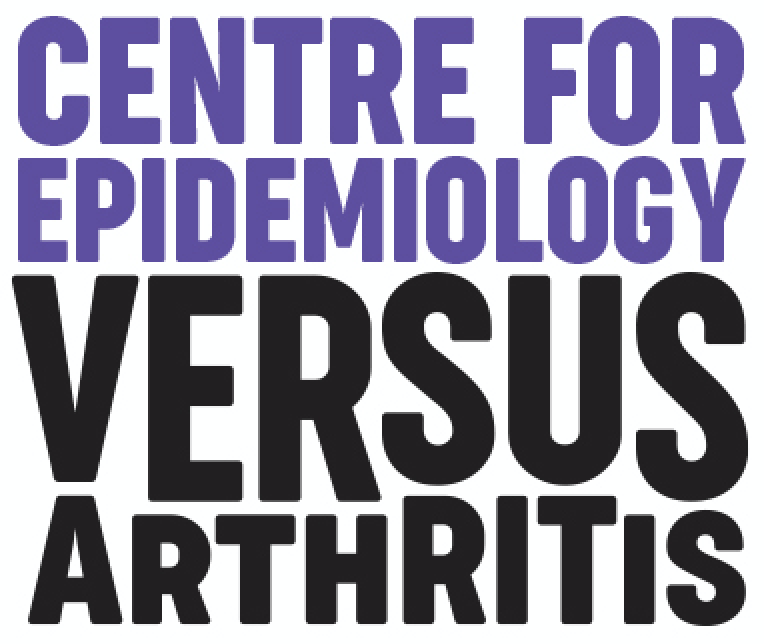Blog
Rebecca Barnard
2017-01-12 11:40
Cynthia's Story
It all began when I was born in 1937. I was diagnosed with jaundice, as many babies are, but when I developed it again at three months old I was sent to Great Ormond Street Hospital, where I was kept until I had completely recovered. My childhood was typical in that I had most of the usual childhood diseases (except for mumps, which my sister had instead). Unusually though, if I turned awkwardly or slipped while running for a bus, I would frequently tear or pull ligaments. When my mother took me to the doctors about the pain this would cause, she was told these were only 'growing pains' - which is ridiculous as it isn't normal to have pain from growing - but was doctor-speak for 'go away'.
I got married in 1958 and had three beautiful sons. In 1976, I divorced my husband. I then discovered that he hadn't been paying the mortgage, and so we (my sons and I) had to sell up and move to a much smaller house, which I didn't like from the beginning.
I can't say that everything that followed was due to the divorce; however, a clever physician did later say that all illnesses are within us, but it takes traumatic events to bring them out and for them to start wreaking havoc on the body.
I have three invisible conditions:
The one I've known about for longest can be lethal - but it is currently stable as I take good care of myself. It has more than one name: secondary hyperaldosteronism or chronic adrenal insufficiency, and must be treated 'as if' I have Addison's disease, a disorder of the adrenal glands.
Around 1980, I was in quite a bad way – I would fall over rather too often and have frequent dizzy spells and lots of bruises. This got a lot worse from 1984: I'd get up in the morning on the three days I worked, and by the time I had tidied up I would have to lie on my bed for a couple of hours to gather enough energy to get in the car to drive to work. I had no reserves to draw on. On top of this, during one year the prescription for my glasses changed three times - what was that about?
I worked my way round the doctors in my GP surgery, whilst I did some research on my own. In 1985, I attended the Here's Health Exhibition, and as a result of what I learned here asked to be referred to an allergy specialist. Following the consultation, I was told that I was to come into the hospital unit ASAP for a 2-week stay. I had a number of tests here; on day one I almost died as a result of one of them. I don't think I was gone long, but I definitely had no pulse. I know this because as I was returning to my body, I heard one of the unit's doctor's say so, and add, with much relief, "ah there it is, thank G-d".
The entire process took three months. I was eventually told I had secondary hyperaldosteronism and to start with I had to take 15mg of cortisone acetate every day. My pituitary gland was swollen, and I also had low-voltage tachycardia and postural hypotension. When my condition had been stabilised, the cortisone dose was reduced to 5mg daily.
My second condition is type 2 diabetes which I manage through diet and tablets.
The third condition is Hypermobility Ehlers-Danlos syndrome (H-EDS), which I've had all my life but only learned about in 2004 when I consulted a rheumatologist about a bad shoulder and the many other pains in my body. He said that I have joint hypermobility syndrome, which is part of Ehlers-Danlos syndrome (EDS). This is a malfunction of the collagen in the body which is too stretchy and elastic. Normal people's muscles and tendons go back to their original state after being stretched, but ours don't always follow the same pattern and sometimes stay stretched, or they tear. Normal people's joints do not sub-lux (partial dislocation), or dislocate – for some people with EDS this happens very frequently.
Thankfully, my joints don't dislocate, but the cartilage in my knees and the ligaments in my legs stretch and tear too easily.
Looking on the positive side, in a stroke I went from a person with several different conditions - a hiatus hernia; spondylolisthesis and stenosis in my lumbar spine; a mitral valve prolapse; irritable bowel syndrome; a bladder prolapse, lots of painful joints, dizziness, falling upstairs and banging myself on things - to someone with an umbrella condition that is able to encompass most, if not all, of these issues.
In addition to the above, in May 2015 I was fitted with a dual wired pacemaker as the upper and lower chambers of my heart weren't communicating with each other properly and kept going out of synchronicity (my pituitary and adrenal glands also don't communicate electrically, but should, and this is why I have chronic adrenal insufficiency. I have to take cortisone acetate, a steroid, to stay alive).
In July 2015, I had my spine repaired. I had a laminectomy (a surgical procedure that removes a portion of the vertebral bone called the lamina) to remove the impingements causing the stenosis and a TOPS implant (spinal joint replacement) to repair the spondylolisthesis. It has worked very well and I can now stand for more than a minute without the agony I had before, I am also able to walk.
Four months ago, I had a total right knee replacement as my knee surgeon said I've no meniscus (c-shaped disc that cushions your knee) left to mend. When he deems that the time is right, he will replace the left knee too. All of this is terribly painful and I am using 50mcg 3-day patches of Fentanyl. Because I cannot take anti-inflammatory pills, I was also on 8 x 50mg of Tramadol daily. I have been able, recently, to reduce these to occasional use as I am allergic to the morphine and must take an antihistamine with every dose of the Tramadol.
It was a waste of time taking pain pills for my back before 2015, when I had the spinal operation, as they only reduced the tiniest tip of the pain. So I did things that would divert and occupy my mind. The first was reading. I have always read a lot - and still do - but generally I read novels as I can lose myself in the story. I also read very fast as only my eyes move and I usually finish a 150 page novel in about an hour. Several years ago, I was tested for fun and found that I read 500 words a minute, with eight out of ten for recall. I doubt that I'd remember as much now.
I am also a sculptor and I feel that my work is a testament to what one can do while keeping positive through pain. Going out to sculpture sessions in studio became the best therapy, especially after 2011 when my back pain grew so bad that at night I would scream and wake up with every movement. It didn't mean that my back didn't hurt whilst I was working (as it did!), but, it would take my mind off it. I would get up every so often, walk around, look at what others were doing, look at my own work from different angles, and then sit down again to either correct or enhance what I'd seen.
I used to carve wood, and might still go back to it, but mostly I use soapstone now, as it is softer, or occasionally, alabaster. I also model animals and birds in wax and have them cast. My work in stone can be quite abstract. Except for my Fantasy Dancers - which I created in 2012 after a lorry-driver fell asleep and drove into my car - my modelled and cast work is as realistic as possible.
I'd arrive at the studio feeling unwell, but with work to do I would leave some hours later tired but with my mind rested; I have found that having something to do with my hands that totally occupies my mind is the best diversionary therapy that there is. Also, if you do something you love -and do it well - it gives your 'self' a great sense of achievement and fulfilment.
In the last four months, with high doses of pain medicine, the weather hasn't made much, if any, difference to my pain levels. And my entries in the uMotif app don't seem to mean very much as I am always tired and in a lot of pain, though the knee pain is very slowly reducing.
Cynthia Lewis. SWA.
You can see some of Cynthia's work on her website - www.cynthialewis-sculptor.com.






